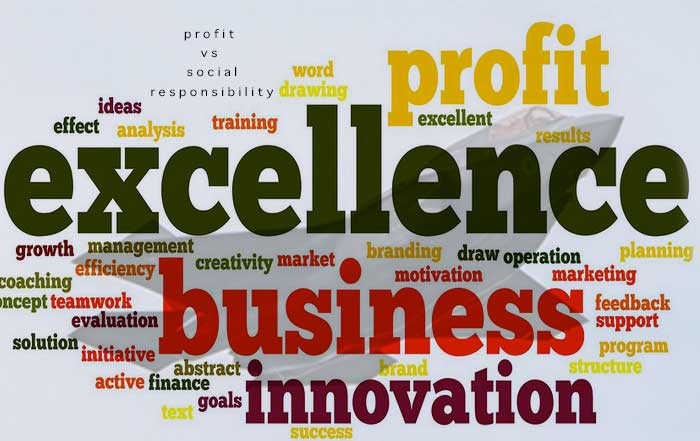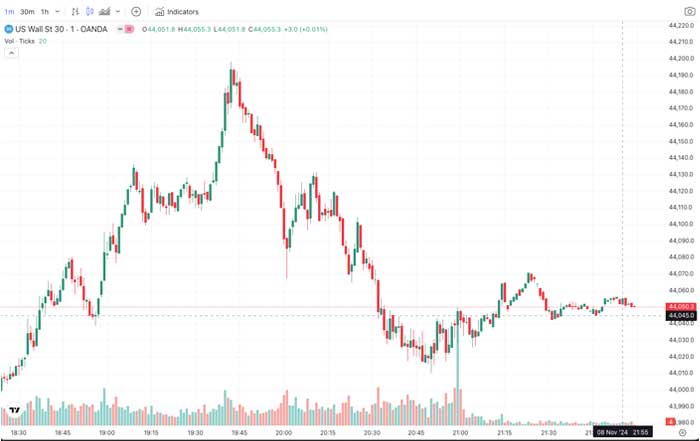In 2025, Finland stands as one of the most admired nations in the world for its exceptional balance between economic development, technological innovation, and a deep-rooted commitment to sustainability. Unlike many countries that view sustainability as an afterthought to economic growth, Finland has built its national identity around a harmonious integration of environmental protection, social responsibility, and forward-looking business policies. This commitment has placed Finland among the global leaders in climate action, digital transformation, and innovation-driven competitiveness.
For global businesses and investors, Finland is more than a Nordic destination—it is a model for how societies can adapt to 21st-century challenges without compromising prosperity. Whether it is in renewable energy, artificial intelligence, sustainable forestry, or circular economy practices, Finland has cultivated an ecosystem that attracts both multinational corporations and ambitious startups. As geopolitical and economic uncertainty spreads across many regions, Finland’s consistency, stability, and transparency continue to make it an anchor of trust in Europe and a significant hub for global business.
This article explores Finland’s journey, examining its role as a sustainability pioneer, an innovation powerhouse, and a nation that provides valuable lessons for international markets.
Finland’s Sustainability Leadership
The Nordic Commitment to Green Growth
Finland has long been part of a regional trend in the Nordic countries that emphasizes social equity, environmental stewardship, and economic competitiveness. However, what makes Finland stand out is the speed and depth of its policy integration. The government has pledged to achieve carbon neutrality by 2035, one of the most ambitious targets in the world, and it has built cross-sectoral strategies to ensure industries align with this mission.
The country’s success is closely tied to its reliance on renewable energy. Hydropower, wind, and biomass already account for the majority of Finland’s electricity production, and the share of fossil fuels continues to decline sharply. Finland is also a global leader in forest-based bioeconomy, leveraging its vast forest resources sustainably to produce energy, packaging, and high-value materials while maintaining one of the strictest conservation frameworks in Europe.
Businesses looking to invest in sustainable energy markets can find in Finland not only policy stability but also a thriving ecosystem of innovation. For instance, companies like Neste, a Finnish oil refining company turned renewable energy leader, are setting global benchmarks with renewable diesel and sustainable aviation fuel.
Learn more about sustainable business practices.
Circular Economy in Practice
While many countries speak of the circular economy as a future goal, Finland has already embedded it into its economic structure. The Finnish Innovation Fund Sitra has developed one of the world’s most comprehensive roadmaps for transitioning to circular models, influencing policy, business, and consumer behavior.
From recycling infrastructure to circular design in consumer goods, Finland shows that circularity is not merely a waste management solution but a competitive advantage. Companies such as Fortum are leading innovations in plastic recycling and waste-to-energy technologies. The result is not only reduced environmental footprint but also the creation of high-value markets that generate employment and attract foreign investment.
Businesses that embrace circular economy principles in Finland gain access to international recognition, strong government support, and a consumer base that values sustainable choices. Finland has also been instrumental in advancing EU-wide directives on recycling and carbon reduction, making its policies an important blueprint for the broader European market.
For investors interested in global sustainability trends, Finland demonstrates how long-term commitment translates into resilient economic outcomes. See more insights on global markets.
Finland as an Innovation Hub
Education and Human Capital
Finland’s innovation culture is deeply rooted in its world-renowned education system. Known for its equity-based model, the Finnish education framework produces one of the highest-skilled workforces in Europe. Students are encouraged from an early age to engage in problem-solving, critical thinking, and technology-driven learning, which later translates into a labor market that adapts quickly to technological shifts.
This has allowed Finland to rank among the top countries in the Global Innovation Index, and its investments in research and development consistently exceed 3% of GDP. For international companies, this translates into a strong pool of talent in fields such as artificial intelligence, green technology, and engineering.
Learn more about employment trends in innovation-driven economies.
Finland's Sustainability & Innovation Journey
Carbon Neutrality Commitment
Finland pledges to achieve carbon neutrality by 2035, one of the most ambitious targets globally, establishing cross-sectoral strategies across industries.
Renewable Energy Milestone
Over 80% of Finland's electricity now comes from renewables, with hydropower, wind, and biomass leading the transformation.
AI Ethics Leadership
'Elements of AI' program reaches millions worldwide. Finland establishes ethical AI governance frameworks emphasizing transparency and human-centric development.
Circular Economy Integration
Finland fully integrates circular economy principles into its economic structure, with companies like Fortum leading plastic recycling and waste-to-energy innovations.
Global Investment Hub
Foreign direct investment surges as multinational corporations establish R&D centers in Finland for AI, quantum computing, and sustainable energy technologies.
Sustainability Role Model
Finland stands as a global role model, ranking top in innovation indices while maintaining the highest sustainability standards and serving as a blueprint for responsible capitalism.
Finland’s Role in Artificial Intelligence and Technology
In the past decade, Finland has positioned itself as a European leader in artificial intelligence adoption and governance. The government’s AI strategy emphasizes both competitiveness and ethics, ensuring that AI development aligns with societal well-being.
The flagship initiative “Elements of AI,” developed by the University of Helsinki in partnership with Reaktor, has become a global phenomenon, offering free AI education to millions worldwide. This effort highlights Finland’s philosophy: democratizing technology to empower society rather than concentrating benefits in a few corporations.
On the industrial side, Finland is home to major technology companies like Nokia, which has reinvented itself as a leader in 5G and network infrastructure. Finnish startups in healthtech, edtech, and sustainable solutions are increasingly recognized across Europe and Asia, often competing successfully with Silicon Valley and East Asian ecosystems.
Discover more about artificial intelligence as a driver of global business.
Startups and Entrepreneurial Ecosystem
While Finland is a relatively small country in population, it has become a giant in startup creation and entrepreneurial innovation. The Slush Conference, held annually in Helsinki, is one of the largest startup events in the world, attracting founders, investors, and thought leaders from every continent.
Finland’s startup ecosystem is nurtured by government-backed funds, angel investors, and incubators that support entrepreneurs in scaling globally. From gaming companies such as Supercell, which revolutionized mobile gaming, to cleantech innovators pushing solutions for renewable energy, Finland has proven that small markets can breed world-changing companies.
For international investors, Finland’s transparent legal system, low corruption levels, and supportive government incentives make it one of the safest environments in Europe to fund new ventures. See more about founders shaping global industries.
Finland in the Global Economy
A Trusted Player in European and International Trade
As the global economy navigates heightened volatility in 2025, Finland has emerged as a trusted player in both European and international markets. Its reputation for political stability, transparent governance, and long-term sustainability strategies has made it a reliable partner for global trade and investment. Finland’s role is particularly pronounced within the European Union, where it consistently advocates for climate-friendly industrial policies, innovation-driven growth, and balanced fiscal responsibility.
Despite its relatively small population of just over 5.5 million, Finland punches far above its weight in international trade. It exports advanced machinery, telecommunications equipment, paper products, renewable energy technologies, and clean-tech solutions. This diversification has allowed Finland to remain resilient to external shocks such as global supply chain disruptions and fluctuating energy prices.
Learn more about global economic developments.
Banking, Finance, and Investment Stability
Finland’s banking sector is often cited as one of the most stable in Europe, thanks to rigorous oversight, prudent lending practices, and integration with the wider EU financial system. Nordea Bank, headquartered in Helsinki, is one of the largest financial institutions in the Nordic region and plays a central role in advancing sustainable finance. Finland has been a pioneer in issuing green bonds, which finance projects ranging from renewable energy infrastructure to sustainable urban development.
For global investors, Finland offers both security and growth potential. Its sovereign credit ratings remain among the highest in Europe, supported by a robust fiscal framework and low levels of public debt relative to GDP. International funds are increasingly directed toward Finnish companies engaged in clean energy, bio-based materials, and digital innovation.
Discover more about banking and investment strategies in stable economies.
Foreign Direct Investment and Global Expansion
Foreign direct investment (FDI) flows into Finland have increased significantly in recent years, particularly in technology, renewable energy, and advanced manufacturing. International companies are drawn to Finland not only for its skilled workforce and transparent regulations but also for its gateway role into both the European and Nordic markets.
Major multinational corporations have established research and development centers in Finland, leveraging its expertise in artificial intelligence, quantum computing, and sustainable energy. Finnish companies, in turn, are increasingly expanding abroad, particularly into Asia and North America, demonstrating how even smaller economies can achieve a global footprint through innovation.
For investors evaluating long-term stability, Finland represents a safe harbor with consistent growth opportunities in emerging industries. Explore opportunities in investment.
Finland’s Sustainable Industries
Renewable Energy Transformation
Finland’s energy transition is one of the most advanced in the world. With more than 80% of its electricity already derived from renewables, the country has positioned itself as a net-zero pioneer. Its offshore wind energy projects are expanding rapidly, supported by government incentives and partnerships with European energy firms. Nuclear energy also plays a complementary role, with new-generation reactors providing a low-carbon foundation for industrial needs.
The Finnish government has also been at the forefront of hydrogen economy development. By investing in green hydrogen technologies, Finland aims to decarbonize sectors such as heavy transport and industrial manufacturing, further enhancing its leadership in sustainable energy.
Learn more about the technology powering the clean energy future.
Forestry and the Bioeconomy
Forests cover more than 70% of Finland’s land area, making forestry not only an economic pillar but also a cultural cornerstone. What differentiates Finland from other forest-rich nations is its emphasis on sustainable forestry practices, supported by some of the most stringent regulations in the world. The Finnish forest industry does not simply export raw materials; it has shifted toward producing bio-based innovations such as sustainable packaging, textiles from wood fibers, and biodegradable plastics.
Companies like UPM and Stora Enso are global leaders in transforming forestry into a high-tech bioeconomy. These firms have invested heavily in R&D to replace fossil-based materials with renewable alternatives, contributing to the circular economy and strengthening Finland’s reputation as a sustainability champion.
See more insights on sustainable business models.
Technology and Green Innovation
The intersection of technology and sustainability is where Finland’s global influence is most evident. Finnish companies are innovating in areas such as smart energy grids, autonomous vehicles powered by renewable energy, and data-driven environmental monitoring solutions. Finland’s strength lies not only in creating breakthrough technologies but also in ensuring they are scalable and exportable to global markets.
One example is Finland’s pioneering role in smart cities, with Helsinki serving as a testbed for climate-neutral urban solutions. From energy-efficient housing to AI-driven traffic optimization, these models are now being replicated across Europe and Asia.
Discover more about innovation in sustainable industries.
Comparative Advantages in 2025
Finland Versus Other Nordic Economies
When compared with its Nordic neighbors such as Sweden, Norway, and Denmark, Finland stands out for its unique balance of industrial competitiveness and ecological responsibility. While Norway has leveraged oil wealth and Sweden has led in industrial manufacturing, Finland’s strength lies in its dual focus on high-tech innovation and environmental stewardship.
Finland’s smaller domestic market forces its companies to think globally from inception, giving them a natural edge in internationalization. This explains why Finnish startups and multinationals are often more aggressive in pursuing overseas markets than those in larger economies.
The Finland-Germany Connection
Germany remains one of Finland’s most important economic partners, particularly in the renewable energy and industrial technology sectors. Finnish expertise in clean-tech and circular economy aligns well with Germany’s Energiewende (energy transition), creating opportunities for cross-border collaboration.
For businesses evaluating expansion into both Northern and Central Europe, Finland provides an ideal strategic hub. Its geographic location, advanced digital infrastructure, and logistics capabilities make it a natural bridge between Scandinavia, Central Europe, and Asia.
Finland’s Global Reputation in 2025
Internationally, Finland is perceived as a role model nation for sustainability, trust, and innovation. The World Economic Forum continues to rank Finland among the top countries for competitiveness, and global indices consistently highlight its low levels of corruption, strong democratic institutions, and high quality of life.
For international corporations, this reputation translates into tangible benefits: consumer trust, policy stability, and brand association with sustainability. In a world where corporate responsibility is increasingly tied to market value, operating in Finland offers reputational advantages that extend far beyond its borders.
See global insights on business transformation.
Digital Finance, Crypto, and the Future of Money
Finland’s Stance on Digital Currencies
As global economies continue to adapt to the evolution of digital finance, Finland has taken a measured yet progressive approach to cryptocurrencies and central bank digital currencies (CBDCs). The Finnish Financial Supervisory Authority (FIN-FSA) enforces strict regulations to protect investors while allowing innovation in the digital asset sector. This regulatory clarity has made Finland one of the most secure environments in Europe for fintech companies operating in the blockchain and crypto markets.
While speculative cryptocurrency trading has been approached with caution, Finland actively supports blockchain applications in areas such as supply chain management, green energy trading, and digital identity. By combining strict compliance measures with openness to innovation, Finland provides a model for balancing risk and reward in digital finance.
Learn more about crypto trends in global markets.
Finland and the European Digital Euro
Finland is also a strong supporter of the European Central Bank’s digital euro project, which is currently under advanced pilot testing. As one of the most digitally connected societies in the world, Finland is well-positioned to adopt a CBDC, integrating it with its advanced payment infrastructure and strong culture of mobile banking.
Companies in the Finnish fintech sector are already developing tools to facilitate digital euro transactions, highlighting Finland’s role as a testbed for Europe’s digital future. For global investors, this provides early access to one of the most significant shifts in monetary systems since the adoption of the euro itself.
Discover more about banking innovation shaping the future of finance.
Finland and the Stock Markets
A Hub for Sustainable Investment
The Helsinki Stock Exchange, part of Nasdaq Nordic, has become a magnet for sustainability-driven investment. Many of the listed Finnish companies—such as Neste, Kone, and Wärtsilä—are recognized globally for their leadership in green technologies and ethical business practices. Investors increasingly view Helsinki as a platform for exposure to industries that combine profitability with long-term environmental responsibility.
In 2025, the stock market in Finland reflects global investor appetite for Environmental, Social, and Governance (ESG) assets. Finnish companies are often early adopters of transparent ESG reporting standards, which enhances investor trust and attracts international capital. This integration of sustainability into financial markets further cements Finland’s reputation as a leader in responsible capitalism.
Learn more about stock markets shaping sustainable finance.
Finland’s Role in Global Capital Flows
While Finland’s domestic stock market is smaller compared to London or Frankfurt, its influence extends beyond its borders. Finnish investment funds are active in European green bonds, global equities, and venture capital for sustainability-oriented startups.
The country’s pension funds, among the most respected in Europe, are increasingly allocating assets toward renewable energy, digital infrastructure, and climate-resilient industries. This trend not only secures long-term returns for Finnish citizens but also channels significant resources into global sustainable transformation.
See more about investment opportunities linked to Finland’s capital markets.
Employment and the Future of Work
Innovation-Driven Jobs
The transformation of Finland’s economy has profound implications for employment. Traditional industries such as forestry, paper production, and heavy manufacturing have been modernized with automation, artificial intelligence, and digital tools. As a result, the workforce has shifted toward highly skilled roles in engineering, AI development, data science, and clean-tech solutions.
By investing heavily in reskilling programs, Finland has managed to minimize the social disruption often associated with technological change. Workers displaced by automation are retrained for new roles in the green and digital economy, creating a model that many other countries aspire to replicate.
Learn more about employment in evolving industries.
Attracting Global Talent
Despite its relatively small population, Finland has become increasingly successful at attracting global talent. The government has simplified immigration policies for highly skilled professionals and researchers, making it easier for international experts to contribute to Finland’s innovation-driven economy.
Startups and multinational corporations benefit from a multicultural workforce that blends local expertise with global perspectives. This dynamic contributes to Finland’s global competitiveness while enhancing its role as a hub for knowledge-based industries.
Discover more about global business strategies that prioritize talent mobility.
Finland’s Global Leadership Outlook
Artificial Intelligence Ethics and Governance
In the global conversation on artificial intelligence, Finland has become a leading voice for ethical governance. Unlike some countries that prioritize speed of deployment over societal safeguards, Finland promotes AI that is transparent, human-centric, and accountable. Finnish institutions are collaborating with the European Commission and international bodies to establish frameworks that ensure AI adoption enhances human well-being while protecting privacy and equity.
For international companies, Finland’s ethical stance on AI creates a trusted environment for experimentation and scaling, particularly in sensitive sectors such as healthcare, finance, and education.
Learn more about artificial intelligence and its role in shaping ethical business practices.
Finland as a Sustainability Role Model
Globally, Finland is recognized as more than just a Nordic economy—it is a sustainability role model. From carbon neutrality targets to leadership in the circular economy, Finland demonstrates that prosperity and environmental responsibility are not mutually exclusive. The country’s influence extends into international organizations, where it actively shapes climate negotiations, environmental standards, and innovation policies.
As businesses worldwide face increasing pressure to adopt sustainable models, Finland provides both inspiration and practical frameworks. For global corporations, aligning with Finnish standards enhances not only environmental credibility but also market competitiveness.
Explore global sustainable business strategies.
Strategic Position in the 21st Century
Finland’s geographic and strategic position makes it an important link between Europe and Asia, particularly in logistics, digital infrastructure, and clean energy. Its investment in Arctic shipping routes, 5G infrastructure, and renewable-powered data centers underscores its role as a forward-looking hub for global commerce.
For multinational corporations, Finland offers a rare combination: political stability, technological excellence, environmental responsibility, and access to European and global markets. In an era defined by uncertainty, this combination positions Finland as a strategic anchor for international business growth.
Discover more about Finland’s role in the global economy.
Closing Up
In 2025, Finland embodies a compelling narrative of how nations can thrive in the global economy while committing fully to sustainability and innovation. It is a country that has successfully combined green policies with digital transformation, creating a competitive advantage that extends far beyond its borders. From renewable energy leadership to ethical AI governance, Finland offers lessons for businesses, investors, and policymakers around the world.
For companies seeking to align profitability with responsibility, Finland is not just an attractive destination—it is a blueprint for the future of business. By choosing Finland, global organizations align themselves with a model of resilience, trust, and forward-looking growth that will define the decades ahead.








